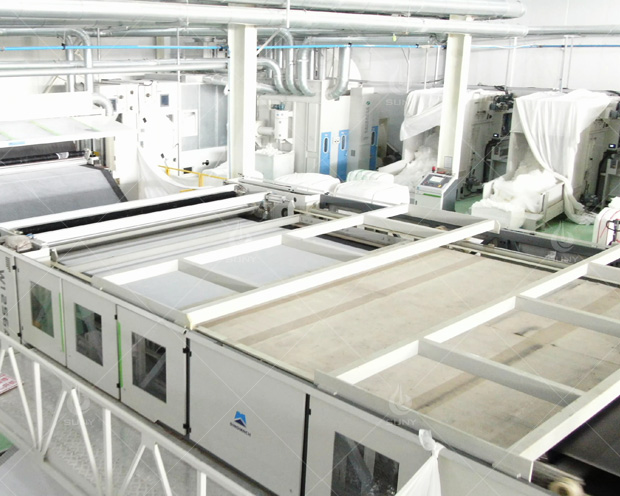Spunbond and spunlace are two different nonwoven fabric manufacturing processes that result in fabrics with distinct characteristics. Here are the main differences between spunbond and spunlace fabrics:
Manufacturing Process:
Spunbond: Spunbond fabric is produced by extruding continuous filaments of a polymer, such as polypropylene, directly onto a conveyor belt. These filaments are then bonded together by heat and pressure to form a fabric.

Spunlace: Spunlace fabric is made by entangling fibers of a variety of materials using high-pressure water jets. This process does not involve any chemical binders or adhesives.
Texture and Feel:
Spunbond: Spunbond fabrics are relatively stiff and have a smooth texture. They are often used in applications where strength and durability are important.
Spunlace: Spunlace fabrics are softer and more cloth-like in texture compared to spunbond fabrics. They are often used in applications where a soft feel is desired, such as in wipes and medical fabrics.
Strength and Durability:
Spunbond: Spunbond fabrics tend to be stronger and more durable than spunlace fabrics due to the way the fibers are bonded together during the manufacturing process.
Spunlace: Spunlace fabrics are softer and more drapeable but may be less strong and durable compared to spunbond fabrics.
Absorbency:
Spunbond: Spunbond fabrics are not very absorbent due to the way the fibers are arranged and bonded together.
Spunlace: Spunlace fabrics have higher absorbency levels because of the entangled fiber structure, making them suitable for applications where absorbency is important, such as wipes.
Applications:
Spunbond: Spunbond fabrics are commonly used in applications such as geotextiles, agriculture, hygiene products, and packaging.
Spunlace: Spunlace fabrics are often used in wipes, medical textiles, personal care products, and other applications where a soft feel and high absorbency are desired.
In summary, spunbond fabrics are known for their strength and durability, while spunlace fabrics are valued for their softness, absorbency, and textile-like feel. The choice between the two depends on the specific requirements of the intended application.